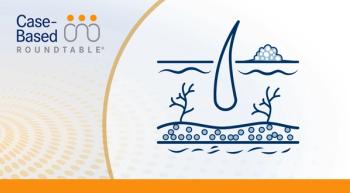
Clinical Characteristics of DLBCL May Predict Outcomes for Patients Receiving CAR T Cells
A single-center experience demonstrated that certain pre- and post-treatment characteristics may predict outcomes for patients with diffuse large B-cell lymphoma following treatment with a chimeric antigen receptor T-cell therapy.
A single-center experience demonstrated that certain pre- and post-treatment characteristics may predict outcomes for patients with diffuse large B-cell lymphoma (DLBCL) following treatment with a chimeric antigen receptor (CAR) T-cell therapy, according to a poster presented during the American Association for Cancer Research (AACR) Virtual Meeting: Advances in Malignant Lymphoma.
The double expressor (DE) molecular subtype of DLBCL was associated with a worse overall survival (OS) and progression-free survival (PFS). Inferior outcomes were also associated with post-CAR T-cell toxicities and the use necessity of support measures as well.
“We examined various patient characteristics that previous trials had reported to effect outcome, such as LDH levels. However, those results were not confirmed,” Coughlin stated. “We also analyzed differences according to molecular subtypes in our cohort and found no differences in patients classified as germinal or double-hit tumors. However, patients classified as DE based on MYC, BCL2, and/or BCL6 expression had significantly worse outcomes. To our knowledge, this is the first study to report DE status as a predictor of survival, and further analysis is needed to assess why these patients experience inferior outcomes.”
The median OS was 9.2 months, and the median PFS was 2.4 months after the administration of the CAR T cells. There were no significant differences in OS and PFS between commercial and clinical trial patients. There were also no significant differences in OS and PFS between patients classified as germinal center B cell or double-hit DLBCL.
Patients who were classified as DE had worse OS and a significantly worse PFS (P =.0005).
The objective response rate was 55% based on the 30-day post-infusion PET scan, which included complete responses in 27.5% of patients and partial responses in 27.5%. Patients who achieved stable disease or progressive disease had significantly worse OS and PFS (P ≤.0001), but this was an expected finding.
Eighty percent of patients had cytokine release syndrome (CRS), and regardless of the severity, patients with CRS trended towards having a worse OS (HR, 6.99; P =.057). The OS was also worse for those with grade 3 or higher CRS compared with grades 1/2 (HR, 1.43; P =.486). Immune effector cell-associated neurotoxicity syndrome (ICANS) was observed in 55% of patients, but only those with grade 3 or higher ICANS were associated with a worse OS compared with those who experienced grades 1 or 2 ICANS (HR, 2.73; P =.066).
Worse OS was significantly associated with admission to the intensive care unit, use of vasopressors, and steroid treatment following the CAR T-cell therapy. Both OS and PFS were not affected by the administration of tocilizumab, which patients had received as needed based on clinical judgment. This finding indicated that aggressive support negatively impacted patients.
This retrospective analysis evaluating relapsed/refractory patients with DLBCL (n = 40) who were treated with CAR T-cell therapy at the University of Sylvester Comprehensive Cancer Center. The purpose of the study was to determine clinical characteristics that may be associated with improved OS and PFS, as well as to evaluate the incidence of post-CAR T-cell toxicities, including CRS and ICANS.
The median age of patients was 62 years (range, 27-81), and the majority were male (70%). The median number of prior treatments was 4 (range, 1-8). Fourteen patients (32%) had received hematopoietic stem cell transplant (HSCT), of which 12 were autologous (86%), and 2 were allogeneic (14%). The disease type for these patients was DLBCL in 40 (91%), follicular lymphoma in 2 (4.5%), mantle cell lymphoma (4.5%), transformed follicular lymphoma in 8 (20%). In the DLBCL, the disease was double-it in 9 patients (20%), DE in 19 patients (43%), germinal center B-cell in 26 patients (65%).
Patients with DLBCL are known to have a poor prognosis when frontline treatment fails, but CAR T cells are an emerging option in the treatment landscape of hematologic malignancies. The FDA has approved both axicabtagene ciloleucel (Yescarta; axi-cel) and tisagenlecleucel (Kymriah) for the treatment of patients with relapsed/refractory DLBCL following impressive response rates in both the ZUMA-1 and JULIET trials.
In this study, the majority of patients had received axi-cel (39; 89%), while tisagenlecleucel was used in 5 patients (11%).
The study was limited due to its small sample size and missing data regarding IPI scores and ECOG performance status. There was also a lack of access to specific T cell numbers, purity, or CD4:CD8 ratios and a lack of pre-treatment serum samples for cytokine evaluation.
“This study showed that patients with DE tumors had worse OS and PFS and also the presence of post-CAR T toxicities and necessity of support measures like ICU care and steroid treatment indicate inferior outcomes to therapy,” Coughlin concluded.
Further evaluation of the effects of molecular subtypes on the development of toxicities post-treatment with CAR T-cell therapy is needed to validate these findings.
Reference
Basher F, Coughlin C, Kwon Deukwoo, et al. Single-center experience of chimeric antigen receptor T-cell (CAR-T) immunotherapy in relapsed/refractory large B-cell lymphoma identifies association of acute toxicities with inferior disease outcomes. Poster presented at: AACR Virtual Meeting: Advances in Malignant Lymphoma: Maximizing the Basic-Translational Interface for Clinical Application; August 17-19, 2020; Virtual. Poster PO-55.















































